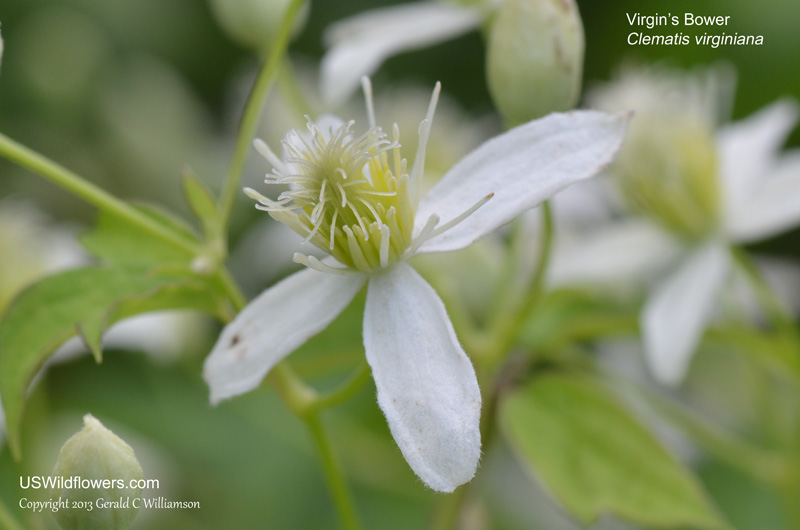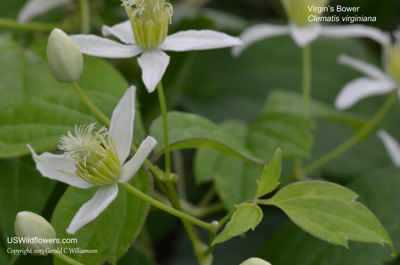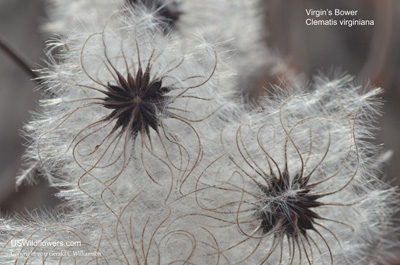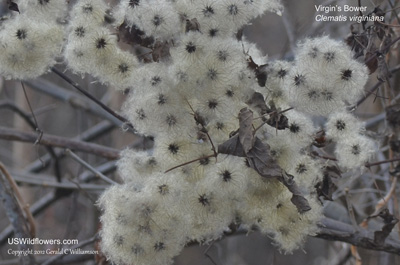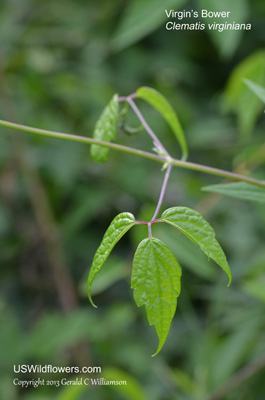Wildflowers of the United States | |||||||||||||||||||||||||||||||||||||||||||
| |||||||||||||||||||||||||||||||||||||||||||
Clematis virginiana - Virgin's Bower, Devil's Darning Needles, Old Man's Beard. There are over 30 Clematis species in the United States. There are some significant differences in the floral and vegetative attributes within the genus, and experts have divided it into four subgenera - some experts have classified subgenus Atragene instead as genus Atragene and subgenus Viticella as genus Viticella. The species presented here, Clematis virginiana, is part of subgenus Clematis, characterized by thin spreading sepals (rather than leathery ones found in the subgenus Viorna or bell-shaped perianths of subgenus Atragene.) The sepals of subg. Clematis are white or yellow, usually in many-flowered inflorescences.
| Clematis virginiana has the widest distribution of the native species east of the Rocky Mountains, with Clematis ligusticifolia having that distinction in the west. These are similar species, and both are found in North Dakota, South Dakota, Nebraska, Kansas, and Oklahoma, with C. ligusticifolia being found westward from there and C. virginiana also in Texas and eastward from there. Found in: AL, AR, CT, DC, DE, FL, GA, IA, IL, IN, KS, KY, LA, MA, MD, ME, MI, MN, MO, MS, NC, ND, NE, NH, NJ, NY, OH, OK, PA, RI, SC, SD, TN, TX, VA, VT, WI, WV Leave comments on Clematis virginiana at this link.  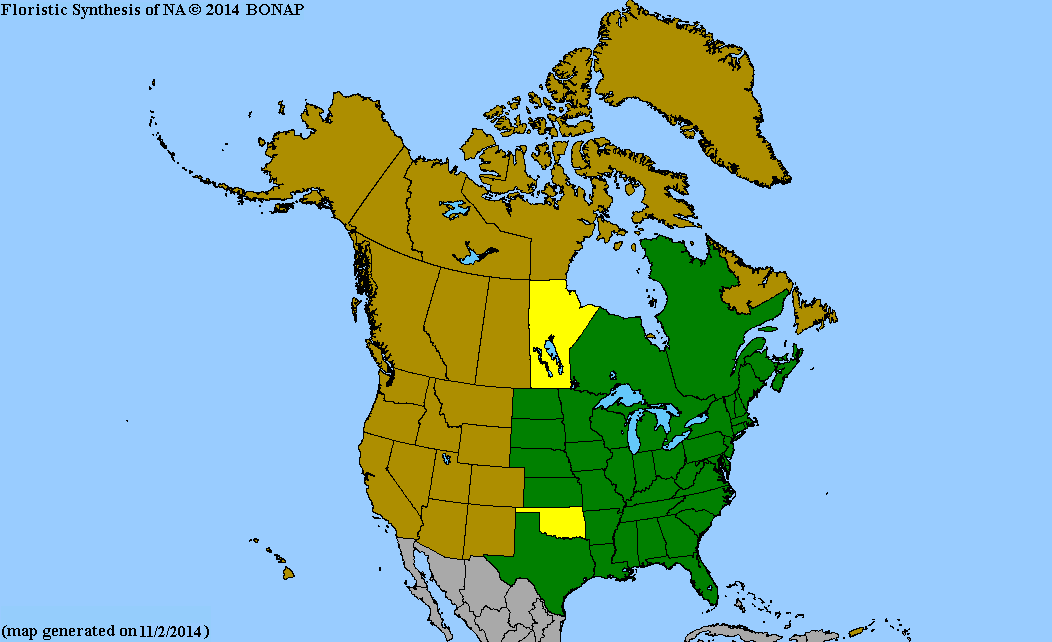 Map courtesy of The Biota of North America Program. Map color key Search Our Database: Enter any portion of the Scientific, Common Name, or both. Do a general Google search of the entire site: #ad #ad
| #ad
| | ||||||||||||||||||||||||||||||||||||||||
|
Commercial / Cookie Notice Looking for Wildflowers for a specific state? Check here: | |||||||||||||||||||||||||||||||||||||||||||
|
All content except USDA Plants Database map Copyright Gerald C. Williamson 2024 | |||||||||||||||||||||||||||||||||||||||||||
Code Update 20230302

